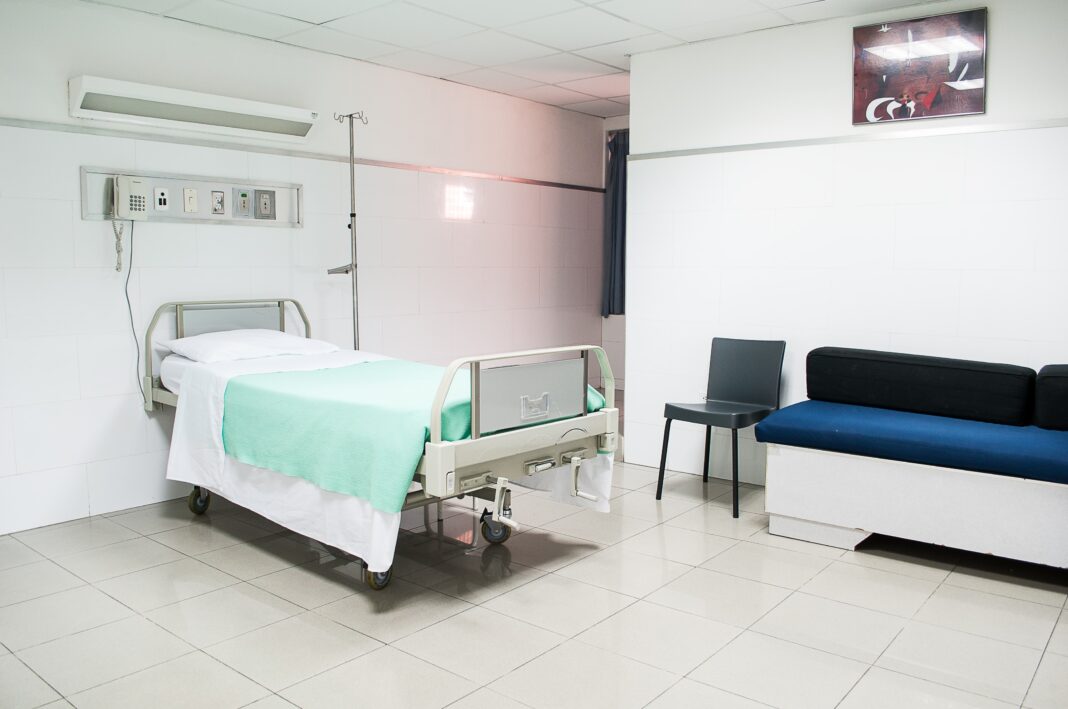Patient rooms are often one of the most important elements of a healthcare facility. It’s where patients receive care and rest and recover, so it’s vital that their needs are met. The right patient room design is key to making sure a hospital or other healthcare facility can provide those needs. Hospital-acquired infections are a serious concern for many patients and healthcare providers. While hospitals have taken steps to prevent these infections, there is still room for improvement. Below are key considerations for patient room design that can help improve air quality and infection prevention in hospital rooms.
Patient-Centered Care
Patient-centered care is a philosophy that focuses on the patient’s needs, values, and preferences. It has been shown to improve outcomes and reduce costs.
Patient-centered care involves treating each person as an individual with specific needs rather than a member of a group with similar conditions or disease states. The focus is on providing excellent care through compassionate interpersonal interactions between providers and patients, their families, or caregivers; it also includes respect for patients’ values and preferences at all times (including end-of-life decisions).
Air Quality
While the design of your facility’s patient rooms is an important aspect of your overall project, there are other factors to consider when it comes to patient room design. Air quality is one of the most important aspects of hospital design, as it can affect patient health, infection prevention, thermal comfort, and more. Air quality also plays an important role in mixed-mode ventilation systems that can improve efficiency while reducing energy consumption by 25 percent or more.
Air monitoring is a key consideration of inpatient room design. The air quality in a room can be affected by many factors, including the type and number of patients being treated and the types of equipment being used. In order to ensure that patients are receiving optimal care, it’s important to monitor levels of particulate matter and gases such as carbon monoxide, ozone, and nitrogen dioxide.
Infection Prevention
The patient room is one of the most important areas in any healthcare facility. It’s where you’ll find patients recovering from surgery, being treated for injuries or other conditions, and even going through end-of-life care. Because of this, it’s important to make sure that your patient rooms are designed with infection prevention in mind.
Infection prevention starts with hand hygiene: washing hands before touching a patient or their belongings will help keep germs out of their environment (and vice versa). Keeping surfaces clean–especially those that come into contact with food–is also essential; this includes tables used for eating or preparing meals as well as countertops near sinks where doctors and nurses wash their hands after treating patients. Linens should be changed often enough so that no one uses an item more than once without being changed out first; this includes bedding as well as towels used by visitors entering rooms who may bring germs from outside environments into yours!
Mattress
The mattress is the most important piece of equipment in your patient room, and it needs to be comfortable for both you and your patients. The right mattress will support your spine, relieve pressure on sensitive areas of the body like the hips, shoulders, and ankles, and provide adequate support for proper circulation. It should also be easy to clean–after all, sick people are messy!
Hospital mattresses like this, hospital mattress in Australia are a key component of patient room design, and they should be chosen with care. The mattress should be comfortable and durable, as well as easy to clean. It should also be able to support the patient’s body weight while still keeping the patient comfortable. So make sure that your mattress is durable enough to stand up under heavy use over time without breaking down quickly or losing its shape completely through wear and tear.
Thermal Comfort
Thermal comfort is a fundamental principle of patient room design. The room temperature should be between 68 and 72 degrees, with no more than 10 degrees difference between the patient’s skin and the air around them.
A thermostat should be placed in each patient room to ensure that airflow is evenly distributed throughout their space–this will prevent hot or cold spots from forming on your patient’s skin, which can lead to discomfort and even illness. Air conditioners or heaters should also be set up to maintain constant temperature levels at all times so that patients feel comfortable when they’re in their rooms (or outside of them).
Lighting
Lighting is an important consideration in patient room design. The lighting should be adequate, but not too bright. It should be focused on the patient and adjustable so that nurses can adjust it based on their needs. It should also be easy to clean and maintain, which is why you should use LED bulbs instead of fluorescent ones because they’re easier to keep clean and don’t give off as much heat (which can damage equipment).
The patient room is one of the most important spaces in any hospital or healthcare facility. This is where patients are treated, and it’s also where they spend most of their time during their stay. It’s important to create a space that is welcoming and comfortable, but also one that helps patients feel at ease. One way to do this is with a diffuser for lighting under your patient rooms. This provides a clean, even light source that will help patients feel more at ease.
Mixed-Mode Ventilation
Mixed-mode ventilation is a method of ventilation that combines two or more different types of ventilation, such as natural and mechanical ventilation. The goal of the mixed mode is to achieve a balance between pressure and humidity control in the patient room while minimizing energy consumption.
Mixed-mode ventilation is a strategy that combines conventional pressure control ventilation and oscillating ventilators in order to provide optimal levels of airflow. Mixed-mode ventilation is often used for patients who have been intubated, as it helps reduce the risk of barotrauma. Mixed-mode ventilation can be used in both single-room and multi-room environments, but it is most effective when used with a single-room environment. When used in a multi-room environment, mixed-mode ventilation can be difficult to manage because it requires more equipment than conventional pressure control ventilation does.
Design for Disassembly
Design for disassembly is a process that helps to reduce the environmental impact of products. It involves breaking down a product into its parts, recycling the materials, and designing the product so it can be easily taken apart.
Designing to be disassembled means that you can remove the parts from the assembly without damaging them or causing any damage to other parts in your facility. This allows you to maintain equipment over time without having to replace it if something breaks unexpectedly because it was designed with this in mind from the beginning.
Conclusion
Designing patient rooms is a complex process that requires input from many stakeholders, including patients and their families. The most important consideration is to always keep the patient in mind while balancing their needs with those of the staff who will be caring for them in this space. Through collaboration between designers and other stakeholders, you can create a space that meets everyone’s needs and contributes positively toward healing.















